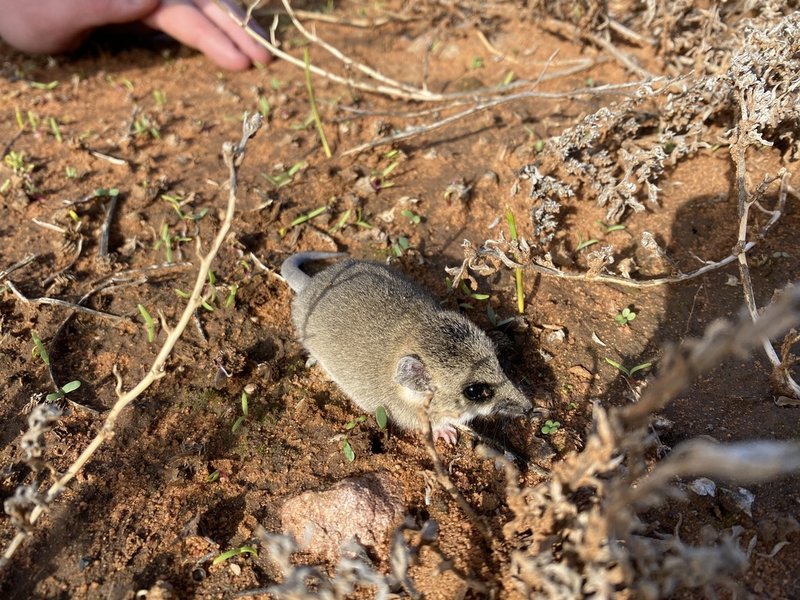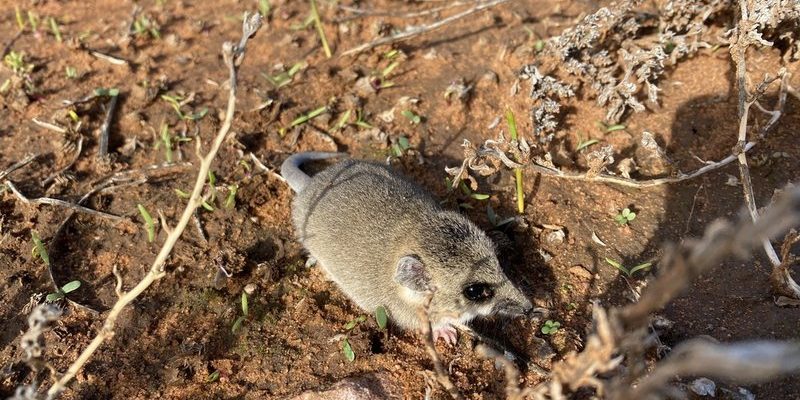
The Fat-Tailed Dunnart is a small but fascinating marsupial native to Australia. Imagine a tiny creature, about the size of your hand, with a plump, fluffy tail that stores fat for those lean times. You might picture it darting around the bush, a little ball of energy and curiosity. It’s a remarkable animal that has adapted to survive in some of the harshest environments. Let’s dive into the world of the Fat-Tailed Dunnart and discover why it’s so special.
These diminutive animals belong to the Dasyuridae family, which is home to other intriguing Australian marsupials like quolls and the Tasmanian devil. Despite their small size, Fat-Tailed Dunnarts have big personalities, full of quirks that make them delightful to learn about. You may wonder how these little critters manage to thrive, what they eat, and how their behaviors help them survive. Let’s uncover these mysteries step by step.
Physical Characteristics
The Fat-Tailed Dunnart is not just adorable; they also have some unique features. Adult dunnarts typically measure around 10 to 15 centimeters in body length, with their tails being almost as long, if not longer. The tail is particularly interesting because it is thick and swollen, a reservoir for fat that the animal can use during times of food scarcity. This adaptation is crucial for survival in the unpredictable Australian climate.
Their fur is soft and often grayish-brown, which helps them blend in with the arid landscapes they call home. One of the standout features of the Fat-Tailed Dunnart is its large, expressive ears, which are perfect for picking up on any sounds that might signal danger or potential prey. Their sharp, keen eyes allow them to navigate easily, even in low-light conditions, making them nocturnal hunters.
But there’s more to their appearance than meets the eye. Their small, slender legs are built for speed and agility, allowing them to escape predators swiftly. And when they feel threatened, they can scurry away and hide within the crevices of their rocky habitats or burrows. Overall, Fat-Tailed Dunnarts are perfectly designed for survival in their rugged surroundings.
Habitat and Distribution
You’ll find the Fat-Tailed Dunnart mostly in arid and semi-arid regions of Australia. Their habitat ranges from dry shrublands to grassy plains, where they can easily hide from predators and find food. They tend to prefer areas with plenty of cover, such as grasses or low shrubs, which provide protection from both the elements and potential threats.
Interestingly, these dunnarts are agile climbers, often seen darting up small bushes or rock formations to escape danger. This agility is crucial, especially considering the number of predators they face, including birds of prey and larger mammals. Their quick reflexes and ability to hide make them tricky to catch.
As you think about their habitat, remember that changes in climate and land use significantly impact these creatures. They rely on their environment for food and shelter, so habitat destruction can pose serious threats to their populations. Conservation efforts are vital to ensure that the Fat-Tailed Dunnart not only survives but flourishes in its natural habitat.
Diet and Feeding Habits
The diet of the Fat-Tailed Dunnart is quite diverse and makes them opportunistic feeders. They primarily eat insects, including crickets, beetles, and other small invertebrates. However, when the opportunity arises, they might also munch on small mammals, lizards, or even seeds. This varied diet allows them to adapt to different conditions and enhances their chances of survival.
What’s fascinating is that these little creatures have mastered the art of hunting at night. They use their keen sense of hearing and smell to locate prey, often pouncing with incredible precision. Imagine it like a little mouse in the night, stealthily stalking its meal. They also have a high metabolism, which means they need to eat frequently to sustain their energy levels, especially given how active they are while foraging.
Adapting their eating habits to their environment is essential for survival, particularly in harsh conditions. When food is readily available, Fat-Tailed Dunnarts will consume extra and store fat in their tails, which they can rely on when food becomes scarce. This strategy is a great example of how these marsupials have evolved to thrive in unpredictable climates.
Reproduction and Lifespan
The reproductive habits of the Fat-Tailed Dunnart are as intriguing as their day-to-day lives. The breeding season varies depending on the region, but it generally peaks during the warmer months when food is plentiful. After a gestation period of about two weeks, the female gives birth to a litter of tiny, underdeveloped young, usually numbering between four to six. They are born blind and hairless, making their beginning stages quite delicate.
Once born, the young dunnarts crawl into their mother’s pouch for safety and nourishment. They remain in the pouch for several weeks, developing and growing until they can venture out. After leaving the pouch, the mother continues to care for her young until they can fend for themselves. This nurturing behavior is critical for their survival and success in the wild.
The lifespan of a Fat-Tailed Dunnart in the wild can range from 2 to 4 years, but they may live longer in captivity with proper care. Their short life span is a reminder of the challenges they face in the wild, from predators to changing habitats. Understanding their life cycle can help in conservation efforts to protect these remarkable marsupials.
Conservation Status
The Fat-Tailed Dunnart may be small, but they play a significant role in their ecosystem, contributing to pest control by managing insect populations. However, their populations are affected by various factors, including habitat loss, climate change, and predation by invasive species. Because of this, they are classified as a species of least concern, but ongoing monitoring is crucial.
Conservationists are working hard to understand their ecology better and implement strategies to protect their habitats. Efforts include habitat restoration, protection from invasive species, and educating the public about the significance of these little creatures. You can help, too, by supporting local wildlife initiatives or simply spreading awareness about the Fat-Tailed Dunnart and their conservation needs.
As we look to the future, it’s vital to continue these efforts to ensure that the Fat-Tailed Dunnart doesn’t just survive but thrives in the wild. Every little action counts, whether it’s promoting awareness or participating in local conservation programs.
Interesting Facts
| Scientific Name: | Sminthopsis crassicaudata |
| Size: | Body length: 10-15 cm, Tail length: up to 15 cm |
| Habitat: | Arid and semi-arid regions of Australia |
| Diet: | Insects, small mammals, seeds |
| Lifespan: | 2-4 years in the wild |
| Predators: | Birds of prey, larger mammals |
FAQ
What is a Fat-Tailed Dunnart’s primary diet?
The Fat-Tailed Dunnart primarily feeds on insects, such as crickets and beetles, but they can also consume small mammals and lizards. Their opportunistic feeding habits make them adaptable to different conditions, ensuring they can find enough food to thrive.
How do Fat-Tailed Dunnarts store energy?
These marsupials have a unique adaptation; their thick, fat-storing tails allow them to store energy for lean times. When food is abundant, they can consume extra, which is then stored in their tails, helping them survive during periods when food is scarce.
Where can I find Fat-Tailed Dunnarts in Australia?
You can find Fat-Tailed Dunnarts in arid and semi-arid regions of Australia. They typically prefer habitats with plenty of cover, such as shrublands and grassy areas, where they can hide from predators and find food.
What is the reproduction process like for Fat-Tailed Dunnarts?
Fat-Tailed Dunnarts have a breeding season that typically occurs during the warmer months. After a short gestation period of around two weeks, the female gives birth to a litter of tiny young, which continue to develop in her pouch for several weeks.
How long do Fat-Tailed Dunnarts live?
In the wild, Fat-Tailed Dunnarts generally live for about 2 to 4 years. Their lifespan can be extended in captivity, where they are protected from predators and provided with consistent care.
Are Fat-Tailed Dunnarts endangered?
While they are currently classified as a species of least concern, Fat-Tailed Dunnarts face threats from habitat loss and climate change. Ongoing conservation efforts are essential to protect their populations and habitats.
How do Fat-Tailed Dunnarts escape from predators?
Fat-Tailed Dunnarts are skilled at escaping predators due to their agility and quick reflexes. They often hide in crevices or burrows when threatened, using their natural camouflage to blend into their surroundings.
What role do Fat-Tailed Dunnarts play in their ecosystem?
These little marsupials play an essential role in their ecosystem by helping to control insect populations. By managing pests, they contribute to maintaining a healthy balance in their environment.
Can Fat-Tailed Dunnarts be kept as pets?
While Fat-Tailed Dunnarts are fascinating creatures, they are wild animals and may not make ideal pets. They have specific habitat needs and behaviors best suited to their natural environment rather than a home setting.
What efforts are being made to conserve Fat-Tailed Dunnarts?
Conservation efforts include habitat restoration, protection from invasive species, and public education about the importance of these animals. By supporting local wildlife initiatives, individuals can contribute to the well-being of the Fat-Tailed Dunnart.

